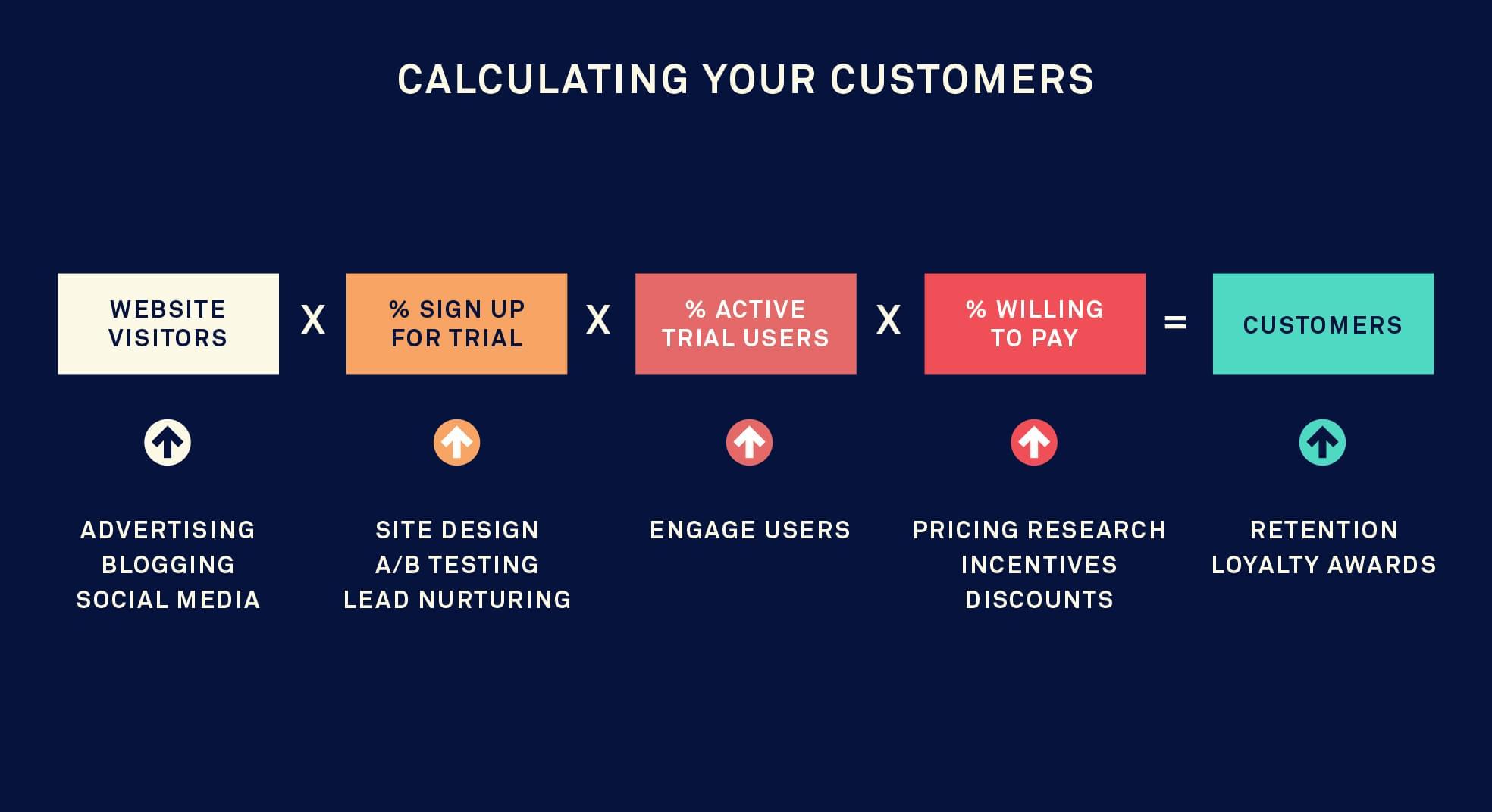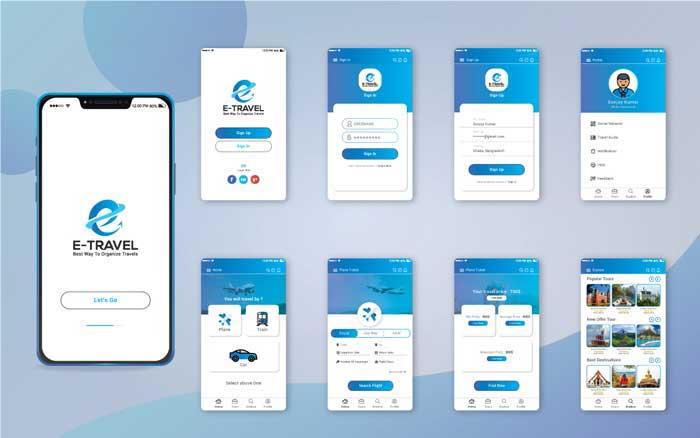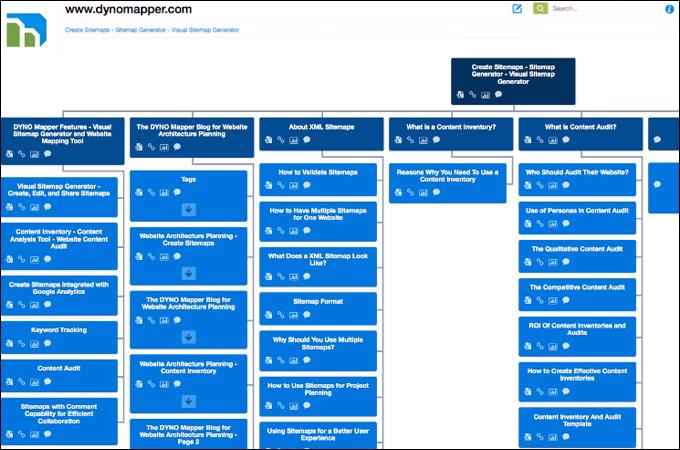In a digital landscape that evolves at lightning speed, the importance of outstanding user interface (UI) and user experience (UX) design has never been more crucial. As we step into 2025, businesses are realizing that a seamless, engaging, and intuitive design can make or break their success in a competitive market. But with so many companies vying for attention, how do you choose the right partner to elevate your brand’s digital presence?
Welcome to our comprehensive guide on the Top 10 UI/UX Design Companies of 2025. We’ve sifted through the noise to bring you the crème de la crème—those innovators who are not only setting trends but are also redefining user experiences. Whether you’re a startup looking to establish your foothold or an established enterprise aiming to refresh your digital identity, these companies have the expertise and creativity to help you stand out. So, grab a cup of coffee, and let’s dive into the world of cutting-edge design that’s shaping the future!
The Future of User Experience Design Awaits You
The landscape of user experience design is evolving at an unprecedented pace, with innovative companies leading the charge. In 2025, the top UI/UX design firms will not only push the boundaries of creativity but will also leverage advanced technologies like AI, AR, and VR to create immersive experiences. As we dive into this dynamic realm, it’s essential to keep an eye on the pioneers who are shaping the future.
What sets these companies apart? Here are a few key attributes that define the best UI/UX firms:
- User-Centric Approach: They prioritize the needs and preferences of users, ensuring that every design decision enhances the experience.
- Innovative Use of Technology: By integrating cutting-edge tools and platforms, they create seamless and interactive interfaces.
- Collaborative Culture: These firms foster teamwork and communication, encouraging diverse ideas that lead to innovative solutions.
As we look towards the future, the importance of collaboration between designers, developers, and stakeholders cannot be overstated. Firms that embrace this collaborative spirit are poised to create products that truly resonate with users. The role of feedback loops is crucial; continuous testing and iteration will become standard practice to refine designs and meet user expectations.
Here’s a glimpse of some standout companies anticipated to dominate the UI/UX design scene in 2025:
| Company Name | Specialization | Location |
|---|---|---|
| Designify | AI-Driven Interfaces | San Francisco, CA |
| UXP Labs | Virtual Reality Experiences | New York, NY |
| Creative Solutions | Mobile App Design | Austin, TX |
| Next Gen UX | Data-Driven Design | Toronto, Canada |
With the convergence of technology and design, these companies are not just meeting the expectations of today’s users but are also setting new standards for tomorrow. For aspiring designers, this is an exciting time to learn from the leaders in the field and explore innovative ways to enhance user experiences.
Unveiling the Titans of UI/UX Design in 2025
As we step into 2025, the landscape of UI/UX design is evolving at an unprecedented pace, with companies pushing the boundaries of creativity and technology. The top design firms are not only enhancing user experiences but also redefining how we interact with digital products. Here are some of the leading contenders that are making waves this year:
- PixelPerfect Designs: Renowned for their meticulous attention to detail, PixelPerfect uses cutting-edge technologies to create seamless interfaces that resonate with users.
- CreativeCloud Studio: This innovative company blends artistic flair with user-centered design principles, ensuring that aesthetics and functionality walk hand in hand.
- DesignHub: With a focus on collaboration and client engagement, DesignHub excels in crafting tailored solutions that elevate user satisfaction.
- FutureVisions: Pioneering the use of AI in UI/UX design, FutureVisions delivers personalized experiences that adapt to individual user behaviors and preferences.
- UXcellence: Their holistic approach to design empowers businesses to connect deeply with their audiences, forging relationships that last.
What sets these companies apart? Their commitment to understanding user needs through extensive research and testing. Each of these firms utilizes a combination of analytics, feedback, and innovative methodologies to ensure the final product is not only visually stunning but also highly functional.
To illustrate the impact of these design powerhouses, consider the following table highlighting their core strengths:
| Company | Core Strength | Notable Project |
|---|---|---|
| PixelPerfect Designs | Attention to Detail | Revamp of E-commerce Platform |
| CreativeCloud Studio | Artistic Flare | Mobile App for Wellness |
| DesignHub | Client Collaboration | Enterprise Software Solution |
| FutureVisions | AI Integration | Smart Home Interface |
| UXcellence | User-Centric Design | Community Engagement Platform |
In a world where user experience is paramount, these companies are not just participants—they are leaders in revolutionizing how we perceive and engage with technology. Whether you are looking for a design partner or seeking inspiration for your next project, understanding the capabilities of these top firms can propel your business forward in 2025 and beyond.
Why These Companies Stand Out in a Crowded Market
In a landscape where innovation and consumer demands evolve rapidly, certain UI/UX design companies have managed to carve a niche for themselves, standing out through their commitment to excellence and creativity. Their success is not just a matter of chance; it stems from a combination of factors that resonate with clients and end-users alike.
First and foremost, these companies understand the importance of user-centered design. By prioritizing user experience in every project, they create intuitive interfaces that not only meet functional needs but also enhance user satisfaction. Their designers conduct extensive research, employing methods such as user testing and feedback loops, ensuring that the final product aligns closely with user expectations and behavior.
Additionally, many of these standout firms leverage cutting-edge technology to stay ahead of the curve. Whether it’s integrating AI for personalized user experiences or using advanced prototyping tools, their ability to embrace and implement new technologies allows them to deliver innovative solutions that keep users engaged and coming back for more. This adaptability makes them particularly appealing to clients looking for future-proof designs.
Another key differentiator is their collaborative approach. Top companies in the field recognize that successful design is a team effort. By fostering a culture of collaboration, they harness diverse perspectives from various stakeholders, including clients, developers, and end-users. This synergy not only enhances creativity but also ensures that all aspects of the design process are aligned with the overall vision and goals.
Moreover, these companies often maintain a strong focus on brand storytelling through design. They understand that every pixel and interaction contributes to a larger narrative that speaks to the brand’s identity and values. By crafting compelling visual stories, they help brands resonate deeply with their target audiences, ultimately driving engagement and loyalty.
Lastly, many of these firms prioritize sustainability in their design practices. As businesses and consumers become more conscious of environmental impacts, these companies are leading the charge in creating designs that are not only beautiful but also eco-friendly. By using sustainable resources and advocating for responsible design, they position themselves as forward-thinking leaders in the industry.

Innovative Approaches That Redefine User Engagement
In today’s rapidly evolving digital landscape, user engagement is at the forefront of every successful UI/UX design strategy. Companies are increasingly adopting innovative approaches that not only enhance user experience but also create lasting connections with their audience. By embracing cutting-edge technologies and methodologies, these design firms are setting new benchmarks in interactivity and satisfaction.
One of the most exciting trends is the integration of AI-driven personalized experiences. By analyzing user behavior and preferences, designers can tailor interfaces that resonate deeply with individual users. This level of customization fosters a sense of ownership and loyalty, making users feel as though the application was designed just for them. For instance, chatbots equipped with natural language processing can provide real-time assistance, enhancing user satisfaction significantly.
Another approach gaining traction is the use of gamification elements in design. By incorporating game-like features such as points, badges, and leaderboards, companies can motivate users to engage more with their platforms. This technique not only makes interactions more enjoyable but also encourages users to explore new functionalities within the application. The playful nature of gamification can lead to increased retention rates and a stronger community around the product.
Furthermore, immersive technologies such as Virtual Reality (VR) and Augmented Reality (AR) are transforming how users interact with digital content. For instance, e-commerce platforms are utilizing AR to allow customers to visualize products in their environment before making a purchase. This level of engagement not only enhances the user experience but also drives conversion rates by eliminating uncertainty.
To illustrate the impact of these innovative strategies, consider the following table showcasing key metrics from companies that have successfully implemented these techniques:
| Company | Strategy | Engagement Boost (%) |
|---|---|---|
| Design Corp | AI Personalization | 35% |
| Game Changers | Gamification | 50% |
| Virtual Ventures | AR Integration | 40% |
By implementing such dynamic and engaging strategies, UI/UX design companies are not just creating interfaces; they are crafting experiences that resonate with users on multiple levels. As we look towards 2025, the emphasis on innovative engagement will undoubtedly continue to shape the future of design, offering exciting opportunities for both companies and their users.

Success Stories That Inspire: Transformative Projects
In the fast-evolving world of UI/UX design, a select few companies have not only excelled but have also transformed the industry landscape with their innovative projects. These pioneers showcase how creativity and user-centric approaches can lead to remarkable outcomes that inspire others. Let’s dive into a few of these success stories that exemplify the potential of great design.
One standout success is Frog Design, known for its exceptional ability to blend technology with deep human insights. One of their transformative projects was the redesign of a major banking app, which aimed to simplify user interactions while enhancing security features. The result? A 50% increase in user engagement and a dramatic reduction in customer service calls, proving that thoughtful design can bridge both user needs and business goals.
Another noteworthy example comes from IDEO, which took on the challenge of improving public transportation systems in urban areas. Through extensive user research and prototyping, they developed an app that allows users to plan their journeys seamlessly. This initiative not only increased ridership by 30% but also fostered a greater sense of community among users, showcasing how design can address social issues effectively.
Companies like InVision have also made waves with their collaborative design platform, which transformed how teams approach UI/UX projects. By providing an all-in-one solution for design and feedback, they empowered designers and stakeholders alike to engage in real-time collaboration, ultimately speeding up the design process and enhancing overall project outcomes. The impact? A 70% reduction in project turnaround time for teams utilizing their platform.
| Company | Project | Impact |
|---|---|---|
| Frog Design | Banking App Redesign | +50% User Engagement |
| IDEO | Public Transport App | +30% Ridership |
| InVision | Collaborative Design Platform | -70% Project Turnaround Time |
Lastly, Adobe XD has revolutionized the way designers create and test user experiences. Their extensive suite of tools allows for rapid prototyping and testing, making it easier for companies to iterate on designs based on real user feedback. In a recent case study, a leading e-commerce brand reported a 40% increase in conversion rates after implementing designs created with Adobe XD, highlighting the tangible benefits of investing in high-quality design tools.

What You Can Learn from the Best UI/UX Practices
Understanding the best UI/UX practices is essential for anyone looking to create impactful digital experiences. By analyzing top design companies, you can gain insights into what makes their designs successful and user-friendly. Here’s what you can learn:
- User-Centric Design: The best design firms prioritize their users’ needs, ensuring that every element serves a purpose. They conduct extensive user research to understand behaviors and preferences.
- Consistency is Key: Consistent design elements enhance usability. Leading companies employ uniform fonts, colors, and layouts to create cohesive experiences that users can navigate with ease.
- Feedback Loops: Proficient UI/UX teams understand the importance of feedback. They implement systems that allow users to share their thoughts, which can be used to refine designs continuously.
- Accessibility Matters: Top firms advocate for inclusivity, designing their interfaces to be accessible for all users, including those with disabilities. They often follow guidelines such as the WCAG to ensure compliance.
- Data-Driven Decisions: Successful design companies leverage analytics to inform their design choices. They track user interactions to identify pain points and areas of improvement.
To illustrate how these practices translate into results, consider the following table showcasing some of the key aspects of successful UI/UX projects:
| Design Element | Impact | Example Company |
|---|---|---|
| Research & User Testing | Informed design choices leading to higher satisfaction | Company A |
| Responsive Design | Improved accessibility across devices | Company B |
| Visual Hierarchy | Enhanced user navigation and engagement | Company C |
The integration of these techniques not only enhances user experience but also drives business success. By learning from these industry leaders, you can apply their principles to your projects, setting a high standard for design excellence.

How to Choose the Right Design Partner for Your Needs
Choosing the right design partner is crucial for any project, as they will be instrumental in shaping the user experience and interface of your product. To ensure that your selection meets your specific needs, consider the following factors:
- Portfolio Diversity: Review their past work to understand their design style and versatility. A diverse portfolio showcases their ability to adapt to different industries and requirements.
- Client Testimonials: Look for feedback from previous clients. Positive reviews can provide insights into their reliability, communication, and project outcomes.
- Technical Expertise: Ensure that the design partner has a strong grasp of the latest design trends and technologies. This will help ensure your project is both modern and functional.
Another important aspect to consider is the design process. A good design partner should be able to clearly articulate their approach, which often includes:
- Research and Discovery: Understanding your target audience and their needs through user research.
- Wireframing and Prototyping: Creating initial layouts and interactive prototypes to visualize the design before it’s fully developed.
- User Testing: Conducting usability testing to gather feedback and iterate on designs.
Communication is key in any partnership, especially in design. Make sure your potential partner values:
- Transparency: They should keep you updated throughout the design process.
- Collaborative Spirit: Look for a team that welcomes your ideas and feedback, ensuring that you’re involved every step of the way.
evaluate their pricing structure. While it’s crucial to find a design partner that fits your budget, remember that the cheapest option may not always deliver the best results. Look for a balance between cost and quality, and consider asking for:
| Service Level | Typical Cost | Expected Deliverables |
|---|---|---|
| Basic Package | $$ | Wireframes, 1 Revision |
| Standard Package | $$$ | Wireframes, Prototypes, 3 Revisions |
| Premium Package | $$$$ | Full UI/UX Design, User Testing, Unlimited Revisions |
By focusing on these key areas, you can ensure that you make an informed choice that aligns with your project goals and ultimately leads to a successful partnership.

The Role of Technology in Shaping UI/UX Excellence
The digital landscape is constantly evolving, and at the heart of this transformation lies technology, which plays a pivotal role in crafting exceptional user interfaces (UI) and user experiences (UX). Innovations in technology enable designers to push boundaries, creating intuitive and engaging experiences that resonate with users. From advanced software tools to cutting-edge development frameworks, technology is the backbone of modern design practices.
One of the most significant advancements is the rise of artificial intelligence (AI) in UI/UX design. AI tools can analyze user behavior and preferences, allowing designers to create personalized experiences. This data-driven approach leads to interfaces that not only meet user needs but anticipate them. As a result, businesses can foster a deeper connection with their audience, enhancing user satisfaction and loyalty.
Moreover, the integration of augmented reality (AR) and virtual reality (VR) has opened new avenues for immersive experiences. These technologies enable users to interact with digital environments in ways that were previously unimaginable. Designers can craft experiences that are not only visually stunning but also interactive, allowing users to engage with products and services in real-time. This level of interaction is redefining how businesses communicate their value propositions.
Another key element is the advent of responsive design and the proliferation of devices. As users access content across various platforms—from smartphones to smart TVs—designers must ensure a seamless experience. Responsive design principles, powered by flexible grids and adaptive images, allow interfaces to adjust and function beautifully on any device. This flexibility is essential in today’s mobile-first world, where user attention spans are fleeting.
| Technology | Impact on UI/UX |
|---|---|
| Artificial Intelligence | Personalization and predictive analytics |
| Augmented Reality | Immersive and interactive experiences |
| Virtual Reality | Engaging and realistic environments |
| Responsive Design | Seamless across devices |
Ultimately, the convergence of technology and design creates a dynamic landscape where innovation thrives. As we move toward 2025, companies that leverage these technological advancements will lead the charge in UI/UX excellence. By embracing the latest tools and methodologies, designers can ensure that user experiences are not only functional but also delightful, setting a new standard for the industry.

Emerging Trends That Will Influence Design in the Coming Years
As we look ahead, the UI/UX design landscape is set to undergo significant transformations driven by technological advancements and evolving user expectations. Designers and companies that stay ahead of these trends will not only enhance user experiences but also set themselves apart in a competitive market.
One of the most prominent trends is increased personalization. Users today expect experiences tailored to their preferences and behaviors. By leveraging data analytics and machine learning, design firms can create interfaces that adapt dynamically, offering content and suggestions that resonate with individual users. This level of customization enhances engagement and fosters loyalty.
Another key trend is the rise of voice and gesture-based interfaces. With the proliferation of smart speakers and voice-activated devices, users are becoming more comfortable interacting through voice commands. This shift is prompting design teams to rethink traditional interfaces and incorporate natural language processing and gesture recognition, making interactions more intuitive and seamless.
Furthermore, inclusive design is gaining traction. As society becomes more aware of diverse user needs, designers are focusing on creating interfaces that consider accessibility for people with disabilities. This shift not only broadens the audience but also sets a standard for ethical design practices. Emphasizing contrast, font readability, and navigational ease will be essential in crafting experiences that everyone can enjoy.
| Trend | Impact on Design |
|---|---|
| Increased Personalization | Enhances user engagement and satisfaction. |
| Voice and Gesture Interfaces | Makes interactions more intuitive and natural. |
| Inclusive Design | Expands audience reach and promotes ethical standards. |
Lastly, sustainability in design is becoming a crucial factor as users increasingly prefer brands that contribute positively to the environment. This trend encourages designers to adopt eco-friendly practices and to raise awareness about sustainability through their work. By integrating green principles into design processes, companies can appeal to environmentally conscious consumers and contribute to a healthier planet.

Your Roadmap to Collaborating with Top Design Firms
Finding the right design partner can feel overwhelming, but with a clear roadmap, the process becomes much simpler. Here are essential steps to guide you in collaborating effectively with leading UI/UX design firms:
- Define Your Objectives: Before reaching out, clarify what you aim to achieve. Are you looking for a complete redesign or just a few enhancements? Knowing your goals will help you communicate effectively.
- Research Potential Firms: Investigate various design firms, focusing on their portfolios, client reviews, and case studies. Websites like Behance and Dribbble can be great starting points.
- Evaluate Their Expertise: Ensure the firms you’re considering have a strong grasp of the latest design trends and technologies. Dive into their specialization areas such as mobile app design or web interfaces.
Once you’ve narrowed down your options, initiate contact. Here’s how to make a lasting impression:
- Craft a Clear Brief: Provide a detailed design brief that outlines your project scope, deadlines, and budget. The more information they have, the better they can tailor their pitch.
- Ask the Right Questions: During your initial discussions, pose questions that reveal their design philosophy, collaboration process, and how they handle feedback and revisions.
- Discuss Timelines and Deliverables: Clarity on timelines and what you can expect at each stage is crucial. Creating a timeline together can help keep the project on track.
A successful collaboration hinges on effective communication. Establish regular check-ins and updates to ensure that everyone is aligned. Utilize tools like Slack or Trello for seamless collaboration. By fostering an open dialogue, you can address any concerns promptly and keep the creative juices flowing.
consider formalizing your partnership with clear agreements. A well-structured contract should outline project deliverables, timelines, payment structures, and expectations. This formalizes your relationship and can help prevent misunderstandings down the road.
| Design Firm | Specialization | Notable Project |
|---|---|---|
| Design Agency A | Mobile App Design | Health Tracker App |
| Creative Co. | Web UX | E-commerce Platform Redesign |
| Innovative Designs | UI/UX for Startups | Startup Launch Project |
Frequently Asked Questions (FAQ)
Q&A: Top 10 UI/UX Design Companies in 2025
Q1: Why should I care about the top UI/UX design companies in 2025?
A1: Great question! In today’s digital age, the user experience can make or break a business. The companies on this list are not just design firms; they’re innovators that shape how we interact with technology. By understanding who they are, you can gain insights into the latest trends and best practices that can elevate your own projects or inspire your business strategy.
Q2: What criteria did you use to select the top 10 UI/UX design companies?
A2: We looked at several key factors: creativity, user feedback, project portfolio, industry impact, and client testimonials. We wanted to highlight companies that are not only talented but are also pushing the envelope in design thinking and user-centered solutions. These firms are setting the standard for what exceptional UI/UX design looks like in 2025!
Q3: Can you give me a sneak peek of one standout company on your list?
A3: Absolutely! One standout is DesignGenius, a company renowned for its innovative use of AI in design processes. They’ve developed a unique approach to user research that leverages machine learning to predict user behavior. This ensures that their designs aren’t just visually stunning but also intuitively functional. If you’re looking for a company that’s at the forefront of technology and design, DesignGenius is definitely one to watch!
Q4: How do these companies impact the broader tech industry?
A4: The top UI/UX design companies are often trendsetters. Their work influences not just the aesthetics of products but also the overall user engagement strategies of tech companies. By prioritizing the user experience, they educate businesses on the importance of empathy in design, leading to more user-friendly products across the industry. When these companies succeed, they encourage others to elevate their design standards too!
Q5: What kind of projects do these top companies typically handle?
A5: These companies tackle a wide range of projects, from mobile apps and web platforms to complex enterprise solutions and interactive installations. They work with diverse industries, including healthcare, finance, and e-commerce, ensuring that their designs meet the specific needs of each sector. Their versatility is a testament to their skills, making them invaluable partners for businesses wanting to innovate.
Q6: How can I choose the right UI/UX design company for my needs?
A6: Start by evaluating your project goals and budget. Look for companies that have experience in your industry and a portfolio that aligns with your vision. Don’t hesitate to ask for case studies or references to understand how they have approached similar challenges. A good design partnership is about collaboration, so finding a company whose culture aligns with yours is also crucial!
Q7: What trends should we expect from these design companies in 2025?
A7: Expect a strong focus on personalization, accessibility, and sustainability. The leading companies are integrating features that cater to diverse user needs and preferences, ensuring everyone can enjoy seamless digital experiences. Additionally, eco-friendly design practices are becoming more prominent as companies look to reduce their carbon footprint while still delivering exceptional UI/UX.
Q8: Are there any challenges these companies face in the current landscape?
A8: Certainly! Rapid technological advancements mean these companies must continuously adapt and learn. Balancing innovative design with user needs while keeping up with emerging technologies can be tough. Furthermore, as businesses become more aware of the importance of design, the competition is fierce, making it crucial for these firms to maintain their edge through creativity and quality.
Q9: How can I keep up with the latest in UI/UX design?
A9: Follow industry blogs, attend design conferences, and engage with thought leaders on social media. Platforms like Behance and Dribbble are great for visual inspiration, while podcasts and webinars can keep you informed on trends and best practices. Surrounding yourself with a community of designers can also enrich your understanding and spark new ideas!
Q10: How can I begin to implement some of these UI/UX strategies in my own projects?
A10: Start small! Conduct user research to understand your audience’s needs, and don’t be afraid to iterate on your designs based on feedback. Following design principles such as consistency, simplicity, and accessibility can make a big difference. Lastly, consider collaborating with a recognized design firm to leverage their expertise and elevate your project.
We hope this Q&A inspires you to explore the exciting world of UI/UX design in 2025! Whether you’re looking to hire a firm or enhance your own skills, the possibilities are endless. Happy designing!
Key Takeaways
As we wrap up our exploration of the top 10 UI/UX design companies in 2025, it’s clear that the future of user experience is brimming with innovation and creativity. These companies are not just leaders in design; they are reshaping how we interact with technology, making our digital experiences more intuitive, engaging, and enjoyable.
Choosing the right design partner can make all the difference in your project’s success. As you consider your options, remember the importance of aligning your vision with a company that resonates with your needs and values. Whether you’re a startup looking to make your mark or an established business aiming to revamp your digital presence, collaborating with a top-tier UI/UX firm can elevate your brand and enhance user satisfaction.
So, why wait? Dive into the world of exceptional design, and let these industry frontrunners guide you toward creating experiences that captivate and inspire. The future is bright, and with the right partner by your side, there’s no limit to what you can achieve. Embrace the change, invest in quality design, and watch your digital landscape transform!


